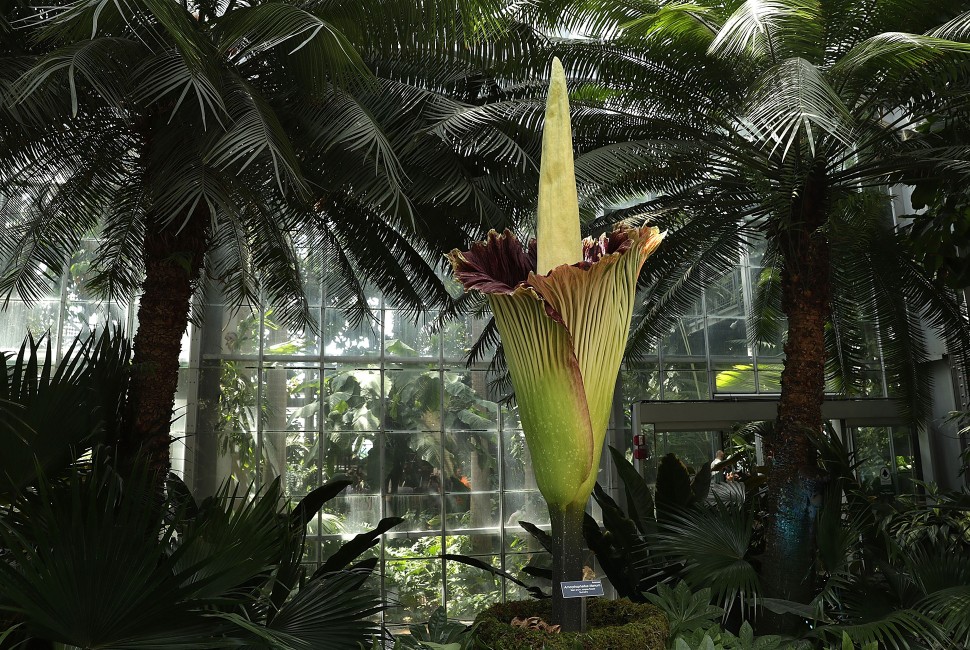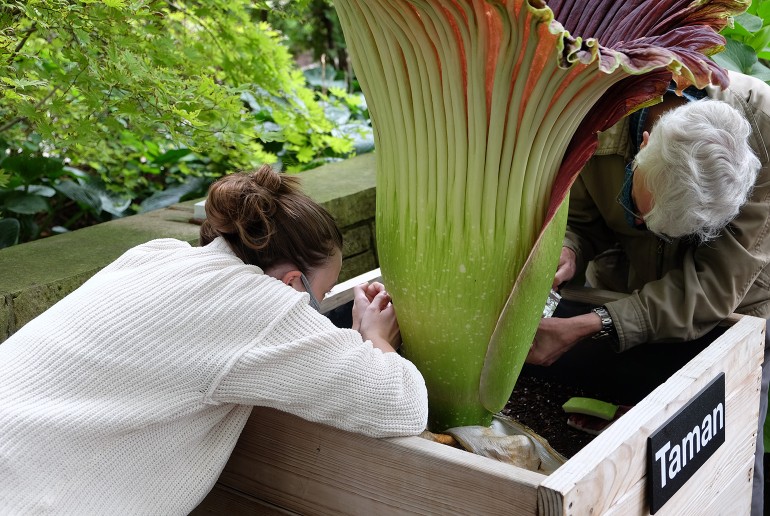Commonly called the “corpse flower,” Amorphophallus titanum is endangered for many reasons, including habitat destruction, climate change and encroachment from invasive species.
Now, plant biologists from Northwestern University and the Chicago Botanic Garden have added a new threat to the list: incomplete historical records.
In a study published in the Annals of Botany, scientists constructed the ancestry of corpse flowers living in collections at institutions and gardens around the world. They found a severe lack of consistent, standardized data. Without complete historical records, conservationists were unable to make informed decisions about breeding. Of the corpse flowers studied, therefore, 24% were clones and 27% were offspring from two closely related individuals.
“There are many risks associated with low genetic diversity,” said Olivia Murrell, who led the study. “Decreasing genetic diversity over time leads to a decrease in fitness. Generally speaking, inbred plants might not produce as much pollen or might die right after they flower. One institution reported that, possibly as a result of inbreeding, all their corpse flower offspring were albino, so they didn’t survive because they didn’t have chlorophyll to photosynthesize. The population as a whole also doesn’t have the variation it needs to survive. So, if a disease or pest affects plants that are all genetically similar, all plants in that population are more likely to suffer. We don’t think people are consciously making the choice to inbreed their plants. They just don’t know what they have because the data are incomplete.”
At the time of the study, Murrell was a master’s student in plant biology in the Program in Plant Biology and Conservation, a partnership between Northwestern’s Weinberg College of Arts and Sciences and the Chicago Botanic Garden. Now she is a Ph.D. student at Manchester Metropolitan University in the U.K. and a conservation scholar at the Chester Zoo. Senior authors from the Program in Plant Biology and Conservation are Jeremie Fant, Nyree Zerega and Kayri Havens. Fant, Zerega and Havens also are conservation scientists with the Negaunee Institute for Plant Conservation Science and Action at the Chicago Botanic Garden.
A finicky flower
Nicknamed for its smell, the corpse flower emits an odor that mimics rotting flesh when it blooms. A clever evolutionary trick, the pungent odor attracts flies and carrion beetles, the plant’s primary pollinators. Because the bloom is rare and short-lived — lasting just 24 to 48 hours — gardens often hold events for visitors to experience the infamous stench firsthand.
“Usually, you have to get close to a flower to be able to smell it,” Murrell said. “That is not true for the corpse flower. The second you walk into its greenhouse, its smell smacks you across the face. It’s very strong. The plant also heats up when it blooms, which spreads its smell farther.”




